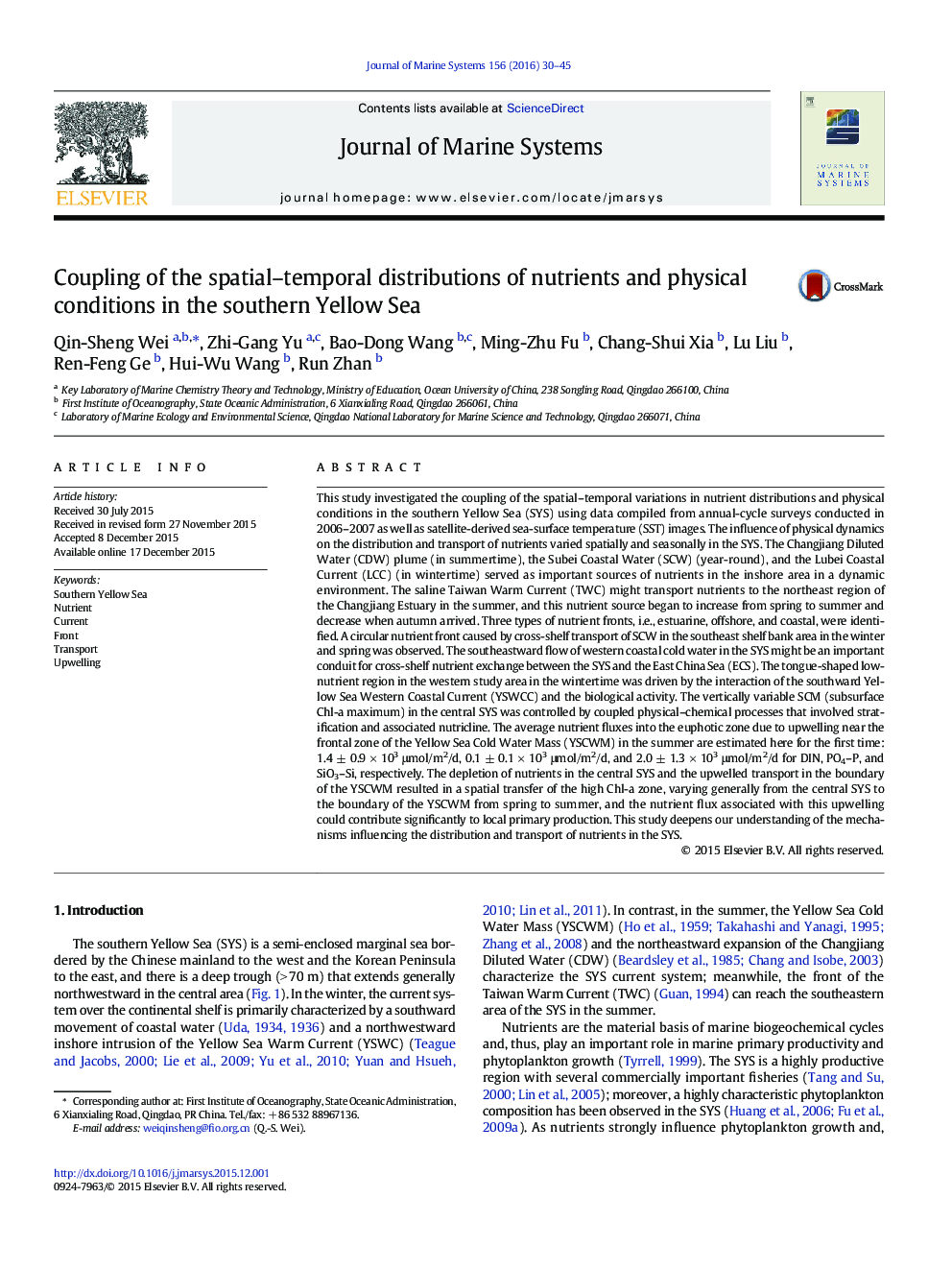| کد مقاله | کد نشریه | سال انتشار | مقاله انگلیسی | نسخه تمام متن |
|---|---|---|---|---|
| 4547883 | 1627274 | 2016 | 16 صفحه PDF | دانلود رایگان |
• Impacts of individual current on nutrient transport were investigated.
• Influences of water masses on nutrient fronts were explored.
• Types of nutrient fronts, i.e., estuarine, offshore, and coastal, were identified.
• Mechanisms of the low-nutrient region in the western SYS in winter were examined.
• Vertical transport of nutrients in cold-water patches in summer was illustrated.
This study investigated the coupling of the spatial–temporal variations in nutrient distributions and physical conditions in the southern Yellow Sea (SYS) using data compiled from annual-cycle surveys conducted in 2006–2007 as well as satellite-derived sea-surface temperature (SST) images. The influence of physical dynamics on the distribution and transport of nutrients varied spatially and seasonally in the SYS. The Changjiang Diluted Water (CDW) plume (in summertime), the Subei Coastal Water (SCW) (year-round), and the Lubei Coastal Current (LCC) (in wintertime) served as important sources of nutrients in the inshore area in a dynamic environment. The saline Taiwan Warm Current (TWC) might transport nutrients to the northeast region of the Changjiang Estuary in the summer, and this nutrient source began to increase from spring to summer and decrease when autumn arrived. Three types of nutrient fronts, i.e., estuarine, offshore, and coastal, were identified. A circular nutrient front caused by cross-shelf transport of SCW in the southeast shelf bank area in the winter and spring was observed. The southeastward flow of western coastal cold water in the SYS might be an important conduit for cross-shelf nutrient exchange between the SYS and the East China Sea (ECS). The tongue-shaped low-nutrient region in the western study area in the wintertime was driven by the interaction of the southward Yellow Sea Western Coastal Current (YSWCC) and the biological activity. The vertically variable SCM (subsurface Chl-a maximum) in the central SYS was controlled by coupled physical–chemical processes that involved stratification and associated nutricline. The average nutrient fluxes into the euphotic zone due to upwelling near the frontal zone of the Yellow Sea Cold Water Mass (YSCWM) in the summer are estimated here for the first time: 1.4 ± 0.9 × 103 μmol/m2/d, 0.1 ± 0.1 × 103 μmol/m2/d, and 2.0 ± 1.3 × 103 μmol/m2/d for DIN, PO4–P, and SiO3–Si, respectively. The depletion of nutrients in the central SYS and the upwelled transport in the boundary of the YSCWM resulted in a spatial transfer of the high Chl-a zone, varying generally from the central SYS to the boundary of the YSCWM from spring to summer, and the nutrient flux associated with this upwelling could contribute significantly to local primary production. This study deepens our understanding of the mechanisms influencing the distribution and transport of nutrients in the SYS.
Journal: Journal of Marine Systems - Volume 156, April 2016, Pages 30–45
